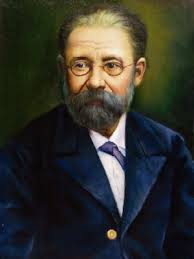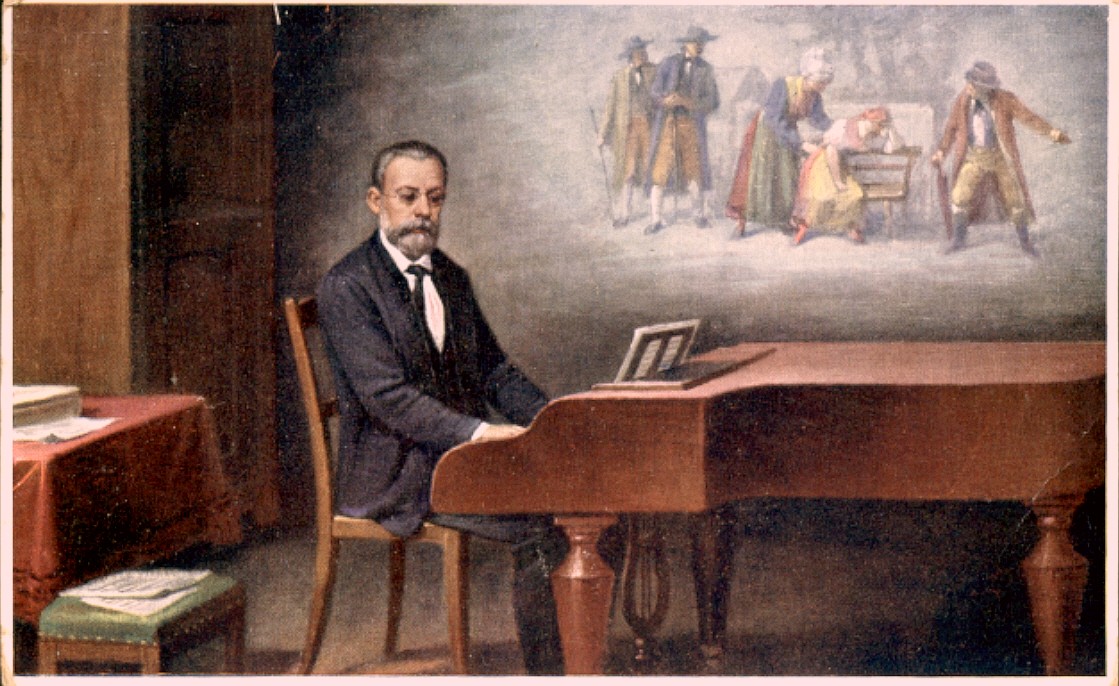Má Vlast (translated as “My Homeland”) is one of the most celebrated works by Czech composer Bedřich Smetana. Composed between 1874 and 1879, this set of six symphonic poems stands as a monumental tribute to the beauty, history, and legends of Bohemia, reflecting Smetana’s deep national pride and his role in the Czech nationalist movement.
Origins and Inspiration
The creation of Má Vlast coincided with a transformative period in Smetana’s life. In 1874, he began to lose his hearing due to an illness, eventually becoming completely deaf. Despite this profound challenge, Smetana channeled his emotional resilience into composing a work that would celebrate the Czech landscape, folklore, and spirit. His personal struggles, coupled with the political climate of 19th-century Bohemia under Austro-Hungarian rule, infused Má Vlast with a passionate sense of identity and defiance.
Structure and Thematic Elements
Má Vlast is structured as a cycle of six symphonic poems, each with its own distinct character, yet interconnected through recurring motifs and thematic unity:
- Vyšehrad: Named after the historic fortress overlooking Prague, this piece sets the tone for the entire cycle. It features the majestic “Vyšehrad motif,” symbolizing the ancient seat of Czech kings and the cultural heart of the nation.
- Vltava (The Moldau): Perhaps the most famous of the six, Vltava vividly depicts the journey of the Vltava River as it flows through forests, villages, and Prague itself. Smetana’s masterful orchestration captures the river’s dynamic essence, from gentle springs to majestic currents.
- Šárka: This dramatic poem draws from Czech mythology, telling the story of the warrior maiden Šárka and her revenge against men during the legendary “Maidens’ War.” The music is intense and fiery, reflecting the tale’s themes of betrayal and vengeance.
- Z Českých luhů a hájů (From Bohemia’s Woods and Fields): A pastoral celebration of the Czech countryside, this piece evokes the serene beauty of nature with lyrical melodies and rich harmonies, highlighting Smetana’s love for his homeland.
- Tábor: Named after the Hussite stronghold, Tábor pays homage to the 15th-century Hussite warriors who fought for religious freedom. The composition incorporates the Hussite hymn “Ye Who Are Warriors of God,” imbuing the music with a sense of determination and heroism.
- Blaník: Serving as a conclusion to the cycle, Blaník continues the Hussite theme. It refers to the legend of the sleeping knights within Mount Blaník, who will awaken to defend the Czech nation in times of peril. The triumphant reprise of the Hussite hymn symbolizes hope and the enduring spirit of the Czech people.
Premiere and Legacy
The first complete performance of Má Vlast took place on November 5, 1882, in Prague, conducted by Adolf Čádek. The cycle was met with great enthusiasm and quickly became a cornerstone of Czech cultural identity. Its evocative melodies and nationalistic fervor resonated not only with Czech audiences but also with listeners worldwide.
Today, Má Vlast holds a prominent place in the classical repertoire. It is traditionally performed at the opening concert of the Prague Spring International Music Festival, symbolizing the resilience and pride of the Czech nation. Smetana’s ability to convey the soul of his homeland through music ensures that Má Vlast remains a timeless masterpiece, celebrated for its emotional depth, historical significance, and artistic brilliance.


Comments are closed